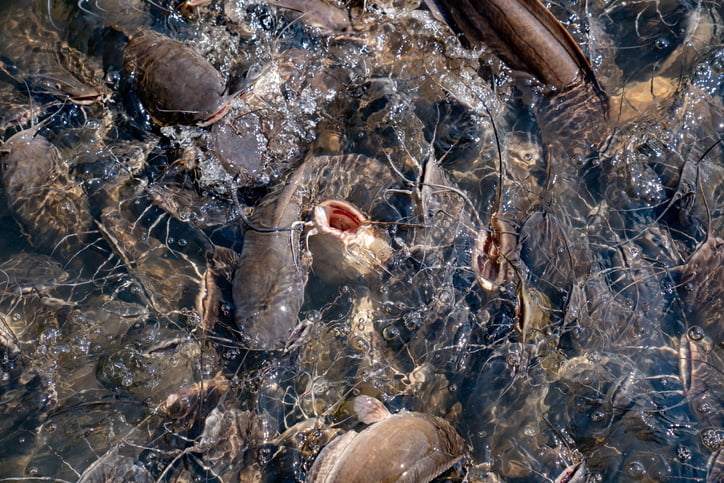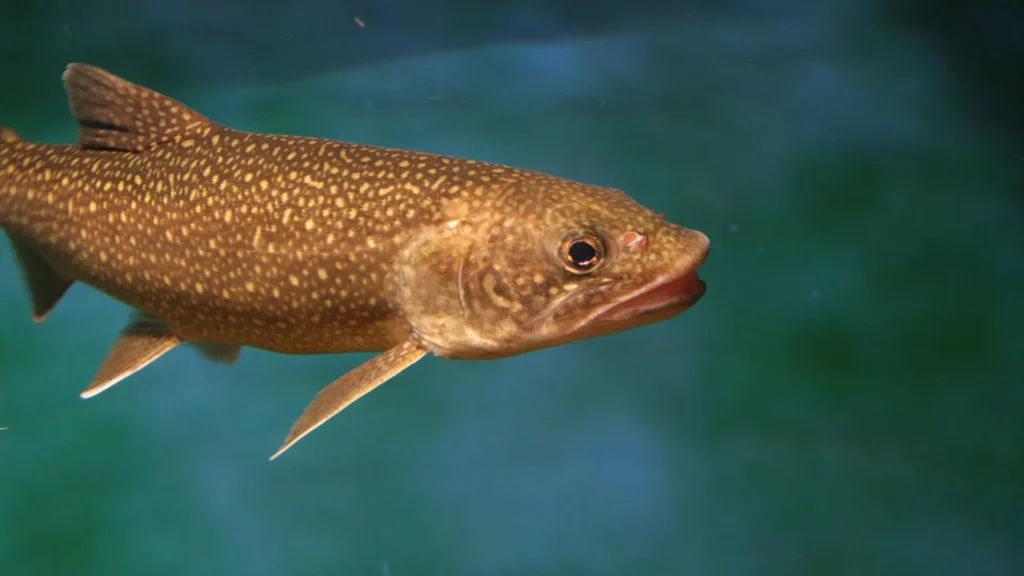Catfish farming has been steadily gaining popularity in recent years, and for good reason. As a highly versatile and resilient species, catfish present immense potential for both commercial and recreational purposes. Whether it’s for a thriving business venture or a hobbyist’s passion project, the appeal of catfish farming continues to grow.
In this article, we will explore the reasons behind this surge in popularity and delve into the key factors that make catfish farming a profitable and fulfilling endeavor. So if you’re ready let’s begin.
Why Catfish Farming?
Catfish farming is lucrative with the rising demand for farm-raised catfish. Consumers prefer sustainable, locally sourced options, increasing the desire for tasty and healthy protein. Effective planning and management can result in a stable income and a consistent supply of fish. Farmers can choose a growth system that suits their resources and expertise.
Catfish farming meets the worldwide need for fish protein sustainably. With overfishing depleting wild fish populations, aquaculture is crucial to satisfy the growing demand for seafood. Raising catfish on farms alleviates strain on wild fish stocks and ensures a consistent supply of premium fish.
How Profitable is Catfish Farming?
Small-scale catfish farming can be financially challenging due to high costs and low market prices. However, it offers an opportunity for individuals to generate income by selling fish directly to consumers.
To succeed in small-scale catfish farming, it’s important to understand the differences between large and small operations. This knowledge helps farmers cater to the specific needs of a smaller setup. Direct marketing is crucial for small fish farms to thrive as it helps build a loyal customer base and boosts profits.
Large Vs Small Farms
Building and operating large catfish farms can be a costly endeavor. According to Cooperative Extension budgets, expenses related to pond construction, equipment, and operational costs can average around $5,000 per acre even before the first fish is harvested.
To succeed in catfish farming and meet processor demands, experts recommend having 80 to 100 acres of ponds. This requires an investment of $400,000 to $500,000 to start a commercial catfish farm. Lenders typically demand 65% owner equity for catfish loans, meaning complete funding may not be provided.
Large catfish farms have cost advantages from economies of scale. They produce fish at a lower price per pound than smaller farms. Larger farms save money by buying catfish feed in bulk. While smaller farms rely on more expensive bagged feed, which can raise expenses by 10 to 20%.
Part-time catfish farming has risks due to inconsistent pond monitoring. Aerator malfunction can lead to fish mortality. To ensure water quality, large farms employ night time oxygen crews, while small-scale producers stock and feed carefully. Their focus is on balanced management for productivity and risk mitigation.
The Catfish Farming Process
When it comes to catfish farming, selecting the right site is crucial for the success of your operation. There are several key factors that need to be considered when choosing a site for your catfish farm.
1. Water Source: To succeed in catfish farming, a key factor is having a reliable water source that is clean and rich in oxygen. Consider proximity to rivers, lakes, or wells that meet the required water quality standards for catfish.
2. Water Availability: Ensure year-round water availability to maintain optimal water quality and a consistent environment for your catfish.
3. Soil Quality: To build a successful catfish pond, the chosen site must have soil with high water-holding capacity, free from excessive clay or sand. Soil tests are recommended to ensure its suitability.
4. Environmental Factors: Choose a catfish farming location that suits the local climate and environment. Extreme temperatures can be detrimental to the fish and increase the risk of diseases. Look for a site that offers natural protection from inclement weather, such as windbreaks or tree cover.
5. Permits and Regulations: Familiarize yourself with local regulations and permits required for catfish farming. Ensure that your chosen site complies with all necessary permits and zoning regulations.
Different Catfish Species Suitable for Farming
In catfish farming, various species are commonly raised for commercial purposes, each with its unique characteristics and requirements. Here are some popular ones:
1. Channel Catfish : The channel catfish, the most common catfish species farmed in the US, is hardy, adaptable, and has a mild, sweet flavor. It grows quickly and can withstand various water conditions.
2. Blue Catfish : Blue catfish are prized for their size, taste, and distinct flavor. They can reach impressive sizes and have a remarkable ability to thrive in cold water, leading to rapid growth rates.
3. Hybrid Catfish: Hybrid catfish, bred from different species, offer rapid growth and strong disease resistance. They are favored in commercial catfish farming for their high yields.
Pond Construction and Management Techniques
Creating the right pond environment is crucial for successful catfish farming. Consider the following techniques for pond construction and management:
1. Pond Size and Design: The size of your catfish pond will vary based on your scale of operation. A larger pond offers advantages for managing water quality and can house more catfish. Take into account factors such as depth, shape, and slope when designing your pond.
2. Water Quality Management: To ensure the health and growth of catfish, it’s vital to monitor and maintain water quality. Regular testing for oxygen levels, pH, and ammonia is crucial. Optimal water conditions can be maintained through proper aeration, filtration, and regular water exchange.
3. Stocking Density: To maintain water quality, prevent disease, and promote healthy growth, it’s vital to manage the number of catfish in your pond. Consult experts or follow industry guidelines to establish the appropriate stocking density.
4. Feeding Practices: Implement a feeding plan that meets their specific dietary requirements, combining commercial feed and natural food sources. This balanced diet supports their well-being and maximizes growth potential.
Nutritional Requirements and Feeding Practices
Meeting the nutritional needs of your catfish is crucial for achieving optimal growth and profitability. Here are some key considerations for feeding practices:
1. Balanced Feed: Provide your catfish with a well-balanced diet formulated for their specific nutritional needs. Use commercial feed pellets tailored for catfish, which contain the necessary nutrients for healthy development.
2. Feeding Frequency: To maintain healthy catfish farming, mimic their natural behavior by offering multiple small meals during the day. Avoid overfeeding to prevent water quality issues and waste buildup.
4. Supplementary Feeding: Supplement catfish diet with live and fresh food for growth, alongside commercial feed. Natural sources like aquatic plants, insects, and small organisms add variety.
Selecting the right site, knowing catfish species, managing ponds, and feeding practices are crucial for successful catfish farming.
Marketing and Selling Catfish
To succeed in catfish farming, know your audience and cater to their preferences. Packaging and presentation are crucial, as visually appealing products attract customers. Invest in high-quality packaging to highlight the freshness and quality of your catfish, setting you apart from competitors and inspiring customer confidence.
To expand your customer base, explore various marketing channels for selling catfish. Local markets provide direct access to consumers in your area. Set up stalls and engage with potential customers, emphasizing unique selling points like farm-raised and high-quality catfish.
In the digital age, use online platforms and a professional website to effectively market your catfish products. Showcase the quality and professionalism of your catfish farming operation. Host tasting events and cooking demonstrations to highlight the versatility and deliciousness of catfish.
Partner with local restaurants or chefs to create special catfish dishes that showcase its unique flavors. Engage with your audience on social media. Share recipes and educational content about the benefits of including catfish in their diet.
How are Catfish Processed for Selling?
Catfish farming includes cultivating and processing the fish. After harvest, the catfish are cleaned and prepared for market. Individually quick freezing is a common method used to preserve the taste and quality. Frozen catfish is available in different forms, like whole fish, steaks, fillets, strips, and nuggets. It can also be marinated, breaded, or precooked for convenience, catering to various culinary preferences.
Consumer Demand and Preference
Catfish is the eighth most popular fish, with a per capita consumption of 0.566 pounds. Farm-raised catfish is sold in different forms, such as whole dressed, steaks, fillets, nuggets, and breaded or marinated options.
Processors prioritize meeting consumer demand. This is done by producing fillets at 60-70%, whole-dressed fish at 10-15%, nuggets at 10-15%, and value-added products at 10-15%. Frozen fillet products have experienced the highest growth in sales, especially through distributors (50%) and national restaurant chains (30%). Fresh catfish products are primarily sold in retail grocery stores and supermarket chains, with whole dressed, fillet, and nugget options.

Conclusion:
Catfish farming can be a sustainable business by managing water and feed efficiently, and practicing responsible production. This helps conserve wild fish populations, minimize environmental impact, and meet the increasing demand for fish sustainably. With knowledge, dedication, and commitment, catfish farming can flourish as a profitable venture.
Additional Resources:
- How to make a profit from catfish farming: https://www.quora.com/How-can-you-make-a-profit-from-catfish-farming
- Catfish from farm to table: https://www.fsis.usda.gov/food-safety/safe-food-handling-and-preparation/meat-fish/catfish-farm-table
- Is catfish farming for you?: https://www.aces.edu/blog/topics/aquaculture/catfish-farming-is-it-for-you/
- Top tips for improving African catfish farming: https://thefishsite.com/articles/top-tips-for-improving-african-catfish-farming
Catfish farming in USA: https://www.agrifarming.in/catfish-farming-in-usa-how-to-start-a-step-by-step-guide-for-beginners


